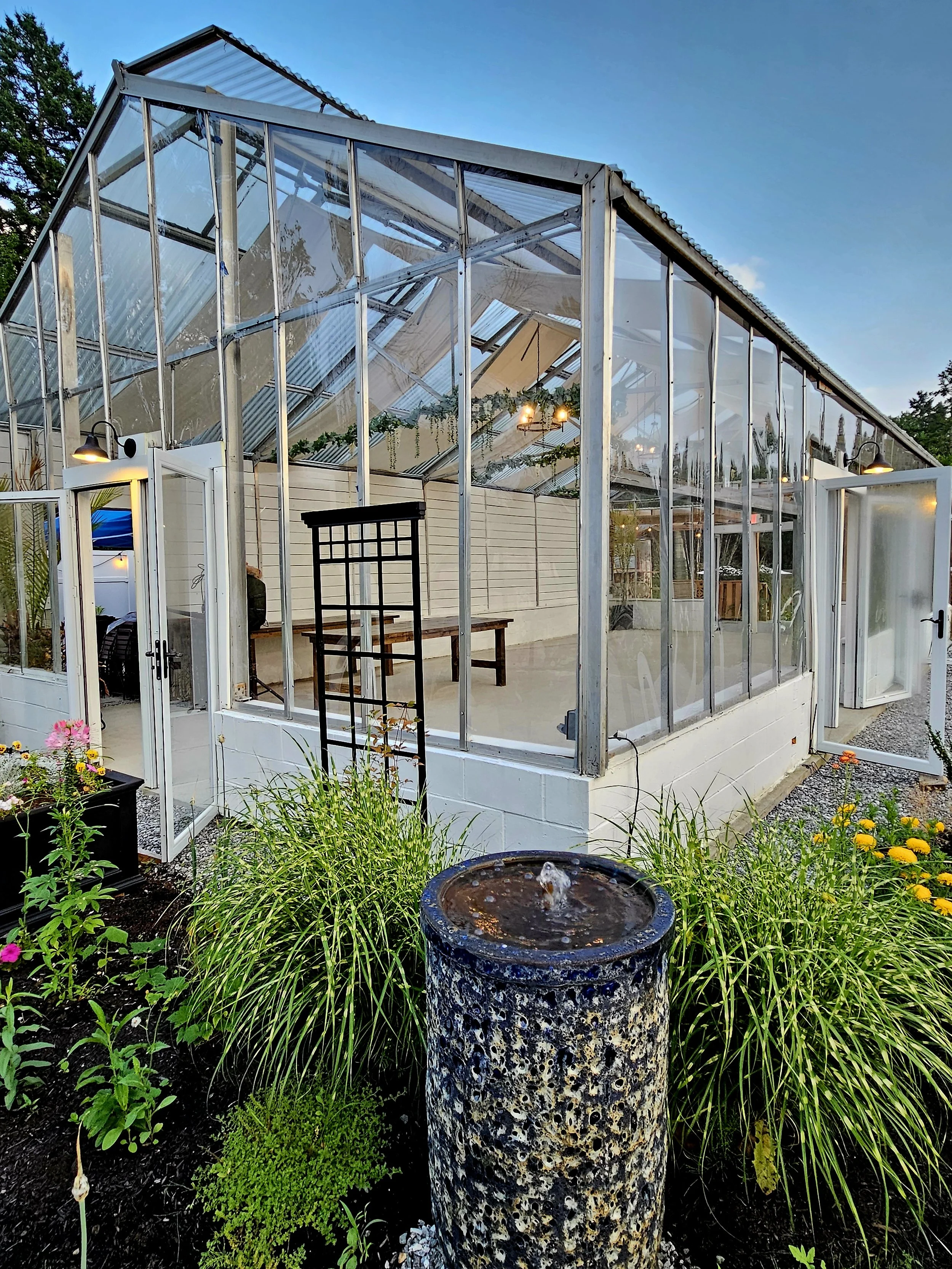In the Garden @19BirchLane: Transforming Landscapes with Perennial Grasses
By Aric Odone, Owner & Head Gardener at 19 Birch Lane
Gardening is an art form, a delicate balance between color, texture, structure, and movement. While flowers often steal the show, perennial grasses bring an entirely different dimension to a garden, creating drama, rhythm, and elegance throughout the seasons.
At 19 Birch Lane, we have embraced ornamental grasses not just as fillers or background plants but as focal points, capable of transforming the landscape in ways few other plants can. Their ability to capture light, sway with the wind, and create a sense of wild beauty makes them an essential feature in our Mid Coast Maine gardens.
The Power of Perennial Grasses in Garden Design
Perennial grasses are more than just supporting players in the garden—they anchor spaces, add vertical interest, and bring a soft, naturalistic feel to any landscape. Whether used in large sweeping drifts or as isolated accents, grasses can make a bold impact.
Here’s how they can elevate any garden:
1. Creating Movement and Energy
Unlike static shrubs or perennials, grasses bring life and motion to a garden. As the wind flows through, their feathery plumes and arching blades sway, creating a mesmerizing, ever-changing display. Even in the stillness of winter, frost-covered grasses add texture and visual intrigue.
2. Adding Architectural Structure
Grasses come in a variety of forms—some upright and statuesque, others cascading and fluid. They can define borders, add contrast to traditional plantings, or create a natural privacy screen. Tall varieties like Miscanthus and Panicum make for striking vertical elements, while lower-growing selections like Prairie Dropseed work beautifully as ground covers.
3. Four Seasons of Beauty
Unlike many perennials that fade into dormancy by late summer, ornamental grasses continue to shine well into fall and winter. Their golden hues, delicate seed heads, and frost-kissed blades create a stunning seasonal display, ensuring that even in the colder months, the garden remains full of life and interest.
4. Effortless Elegance with Minimal Maintenance
One of the greatest advantages of perennial grasses is their low-maintenance nature. Once established, they require little watering, resist most pests and diseases, and don’t demand constant attention. They thrive in poor soils, tolerate drought, and are adaptable to various garden styles—from modern landscapes to naturalistic meadows.
Choosing the Right Grasses for Your Garden
For gardeners in planting zone 6a, selecting the right grasses is key to ensuring year-round beauty and longevity. Here are some of our top picks at 19 Birch Lane:
Panicum virgatum (Switchgrass) – A versatile native grass that adds vertical interest, tolerates wet or dry soils, and boasts stunning golden-red fall color.
Calamagrostis acutiflora ‘Karl Foerster’ (Feather Reed Grass) – An elegant, upright grass that offers early-season blooms and remains structured through winter.
Miscanthus sinensis (Maiden Grass) – Known for its dramatic arching foliage and feathery plumes that emerge in late summer.
Sporobolus heterolepis (Prairie Dropseed) – A low-growing, fragrant grass that creates soft mounds of texture.
Schizachyrium scoparium (Little Bluestem) – Adds striking blue-green summer tones that transform into fiery oranges and purples in the fall.
Designing with Grasses: Inspiration from 19 Birch Lane
At 19 Birch Lane, we have used grasses in various ways to enhance the natural beauty of our gardens. Here’s how you can incorporate them into your own landscape:
Focal Points: Instead of relying solely on flowers for impact, consider using bold grasses like Miscanthus or Switchgrass as striking centerpieces. Their height and movement create an eye-catching display.
Borders and Pathways: Feather Reed Grass lines pathways and garden beds beautifully, offering structure without feeling too rigid.
Wild, Naturalized Plantings: Mix grasses with flowering perennials like Echinacea, Black-Eyed Susans, and Russian Sage to create a meadow-like effect that feels effortless yet refined.
Softening Hardscapes: Planted alongside stone walls, patios, or around the vintage Lord & Burnham greenhouse, grasses help blend man-made structures with nature.
Drought-Tolerant Solutions: If you have a dry, sunny area, grasses like Little Bluestem and Prairie Dropseed thrive with minimal irrigation.
Caring for Perennial Grasses
While these plants are wonderfully low-maintenance, a little care goes a long way in keeping them at their best:
✔ Cutting Back: In early spring, trim grasses down to 4-6 inches to encourage fresh new growth. Avoid cutting in the fall—leaving them up through winter adds beauty and provides habitat for wildlife.
✔ Dividing: Every 3-5 years, divide clump-forming grasses to prevent overcrowding and maintain vigor.
✔ Watering: Newly planted grasses need regular watering, but once established, most can handle drought conditions with ease.
✔ No Heavy Feeding: Over-fertilizing can lead to weak, floppy growth. A light compost dressing in spring is all they need.
Bringing a Timeless, Natural Look to Any Garden
The magic of ornamental grasses lies in their ability to elevate a landscape with little effort. Whether you’re creating a modern minimalist garden, a cottage-style haven, or a sprawling meadow, grasses offer texture, movement, and year-round appeal.
At 19 Birch Lane, we have seen firsthand how these plants bring a sense of harmony and effortless beauty to any space. As we continue to evolve our gardens, we remain inspired by the way grasses capture light, dance in the breeze, and transform with the seasons.
If you’re looking for a way to redefine your garden with a touch of wild elegance, consider incorporating perennial grasses—you may just find them to be the most enchanting plants you’ve ever grown.



